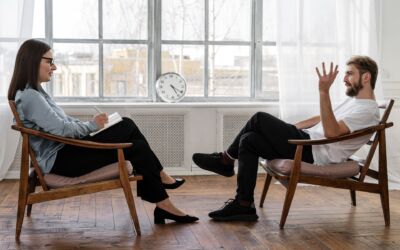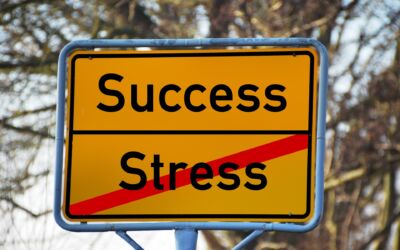Is there anything that the COVID-19 pandemic has not affected on a fundamental level? Should we add the prevalence of agoraphobia to our growing list? Looking back even one year ago, when lockdowns were just starting in the United States, it wasn’t uncommon for people to feel trepidation, but it was also a common assumption that the situation would at least be somewhat under control within a few months.
A year later, and with more than 500,000 people dead and millions infected as a result of the pandemic, the situation persists on many levels, causing people to wonder if we’ll ever truly get back to the “normal” we all once took for granted. This is leading to mental health problems on a grand scale. According to a recent article, COVID-19 may be fueling a rise in agoraphobia as well.
SoCal Empowered is an Orange County mental health treatment center that is dedicated to helping people manage and, hopefully, overcome these types of challenges. We offer a full suite of treatments and services in this regard. Below we’re going to discuss the article that was published. It delves into the nature of agoraphobia and whether it’s something we should expect to see unfold as yet another nationwide mental health challenge that emerges as a result of what’s occurred over the past year.
Agoraphobia: A Brief Overview
Before we get into the recent publication, we should spend a bit of time discussing agoraphobia. Agoraphobia is an anxiety disorder of a specific type. People who suffer from it find themselves feeling anxious in places where they lack overall environmental control. These locations can vary from person to person, but they are almost always public in some sense. For instance, some people with agoraphobia have a fear of large crowds, while others grow anxious in meetings or at social gatherings where they become concerned that they’re going to be put in difficult positions or judged by others. The response to this anxiousness is often a refusal to leave home.
Common Symptoms of Agoraphobia
As is the case with any type of anxiety disorder, there are common symptoms associated with agoraphobia. According to the Mayo Clinic, examples of these common symptoms include fear of:
- Leaving home alone
- Crowds or lines of people
- Enclosed spaces where other people are found
- Public transportation
- Social situations
These symptoms often arise even before a person with agoraphobia encounters these situations, and that’s what causes such a person to avoid them. Sometimes, the response to these circumstances is so strong that it triggers a full-blown panic attack, which is an intense episode of anxiety that can include:
- Trouble breathing
- Rapid breaths
- Increased heartrate
- Sweating
- Vision problems
- Intense fear of imminent harm
Panic attacks can last seconds or even minutes, and a person who is suffering from such an episode is all but completely debilitated until it passes.
The Harvard Medical School Blog and Agoraphobia
The article referenced above relating to agoraphobia and COVID-19 was published by the Harvard Medical School, and its full text can be found here. It discusses the fact that more people are likely experiencing symptoms of agoraphobia as the lockdowns and stay-at-home orders associated with the pandemic are gradually lifted and people are beginning to venture out into public once again. While people were in their homes for extended periods of time, this problem dissipated to a large extent for obvious reasons.
These days, people are fearing this prospect, and the ongoing debate among mental health experts is whether or not these fears are reasonable given the situation. Clearly, there is a risk with going out in public, even as vaccines begin to have a positive effect on the population, so it’s going to be difficult to measure exactly how much worse this anxiety disorder has gotten over the past year. The article also cites a statistic that as of now, approximately two percent of teens and adults in the United States suffer from agoraphobia, and about one-third of them have experienced panic attacks prior to their diagnosis.
Dealing With Agoraphobia and Any Other Anxiety Disorder
It’s not abnormal to feel some trepidation as you begin to reemerge in public life as we move back into what we can now consider “normal” even after the effects of the pandemic have swept across the populace. However, there is a difference between feeling nervous and encountering levels of anxiety that make it all but impossible to function productively.
If you find yourself suffering from what you believe may be a panic attack as you anticipate going back to work, going out to shop for groceries or doing anything else, you should not dismiss that as something that will just “go away on its own,” as the article specifically states that only about 10 percent of people who suffer from agoraphobia will simply get past it with the passage of time.
How SoCal Empowered Can Help
Simply put, agoraphobia, like any other anxiety disorder, is a disease that needs treatment and help. There are a variety of ways in which it can be treated, but every person is different and every set of circumstances and symptoms is also different. That’s why, if you find yourself suffering in this manner, you should seek the input of an Orange County mental health treatment facility that’s going to help you determine your next steps.
SoCal Empowered is such a facility, and we’re here to answer your calls. Contact us today to discuss your situation, and we’ll tell you what you need to hear instead of what you may want to hear. If we collectively decide that treatment is the best approach, we’ll even clarify your insurance coverage options for you before you commit to any additional steps. The first step, however, is the most important, so find out what you need to know today so you can begin the process of putting this troubling condition in the past.




